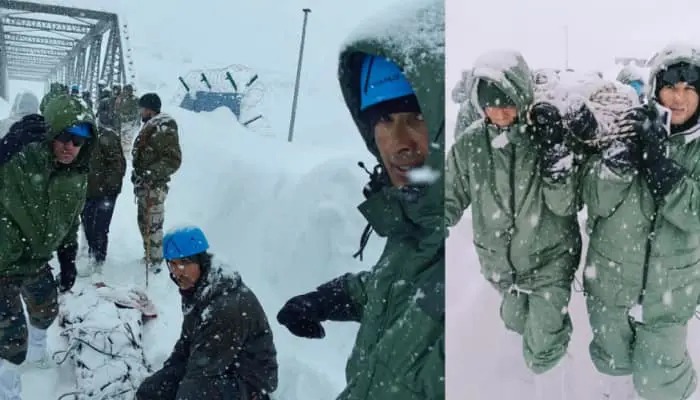
Dehradun: Uttarakhand Chief Minister Pushkar Singh Dhami has conducted a detailed review of the ongoing relief and rescue operations in Mana village, near Badrinath, after a massive avalanche hit the region, leaving 47 workers feared trapped. The avalanche struck a Border Roads Organisation (BRO) worksite, where workers were engaged in clearing snow for army movement.
CM Dhami held emergency meetings with disaster management officials, urging them to accelerate rescue operations despite harsh weather conditions. Multiple teams from the Indian Army, ITBP, and SDRF have been deployed to locate survivors and provide immediate medical aid.
Key Highlights of the Avalanche & Relief Efforts
🌨️ Location: Mana Village, near Badrinath
🌨️ Casualties: 47 workers feared trapped, unknown injuries
🌨️ Rescue Operations: Indian Army, ITBP, and SDRF leading efforts
🌨️ Government Response: CM Dhami orders swift relief measures & future safety protocols
🌨️ Weather Challenges: Heavy snowfall hampering rescue operations
Avalanche Triggers Emergency Response in Uttarakhand
The avalanche struck on Monday morning, catching BRO workers off guard as they were clearing snow along the Badrinath-Mana Pass road. The Indian Army’s strategic movement routes pass through this area, making it a critical zone for connectivity and security.
Eyewitnesses reported a loud rumbling sound before an enormous wall of snow descended onto the worksite, burying several workers and equipment.
CM Pushkar Singh Dhami’s Response & Rescue Orders
📢 CM Dhami’s Statement:
“The state government is working in coordination with the Army and disaster response teams to ensure quick and effective rescue operations. We are closely monitoring the situation and providing all necessary support to the affected families.”
Government Steps to Expedite Rescue Operations
🔹 Deployment of Additional Teams: More personnel from the ITBP and SDRF rushed to the site.
🔹 Helicopter Surveillance: IAF choppers deployed for aerial monitoring and emergency evacuations.
🔹 Medical Assistance Centers: Emergency medical teams and ambulances stationed nearby.
🔹 Weather Monitoring: IMD closely tracking further avalanche risks.
Rescue Efforts Face Extreme Challenges
Rescue operations remain difficult due to:
🏔️ Heavy Snow Accumulation: The avalanche buried workers under tons of snow.
❄️ Subzero Temperatures: Survivors face hypothermia risks if not rescued quickly.
🚁 Limited Air Access: Foggy conditions disrupting helicopter evacuations.
Despite these obstacles, rescue teams are working tirelessly, using thermal sensors, sniffer dogs, and avalanche probes to locate survivors.
Avalanches in Uttarakhand: A Recurring Concern
Uttarakhand has been witnessing a rise in avalanches, particularly in high-altitude military zones. Experts attribute this to:
⚠️ Climate Change: Rising temperatures causing unstable snow formations.
⚠️ Heavy Snowfall: Extreme weather fluctuations increasing avalanche risks.
⚠️ Infrastructure Development: Ongoing road projects in fragile terrain altering snow flow patterns.
Future Preparedness & CM’s Directives
CM Dhami emphasized the need for better disaster preparedness, directing officials to:
✔️ Install advanced avalanche warning systems.
✔️ Train BRO and local workers in emergency evacuation procedures.
✔️ Strengthen communication networks in remote regions.
✔️ Develop shelters for stranded workers during extreme conditions.
Families Await News as Rescue Continues
As rescue teams battle against time and extreme weather, families of the trapped workers are anxiously waiting for updates. Many have gathered at emergency response centers, hoping for miracle rescues.
🔹 Relative of a Trapped Worker:
“We are praying for their safety. We trust the rescue teams but need quick action before it’s too late.”
Conclusion: A Critical Test for Disaster Management
The Mana avalanche has once again highlighted the vulnerability of workers and military personnel in high-altitude zones. CM Pushkar Singh Dhami’s rapid intervention and multi-agency rescue efforts demonstrate strong disaster response measures.
However, this tragedy raises critical concerns about future safety measures and the need for better monitoring systems to prevent such disasters. As rescue operations continue, Uttarakhand’s government remains focused on saving lives and ensuring long-term safety in avalanche-prone regions.










